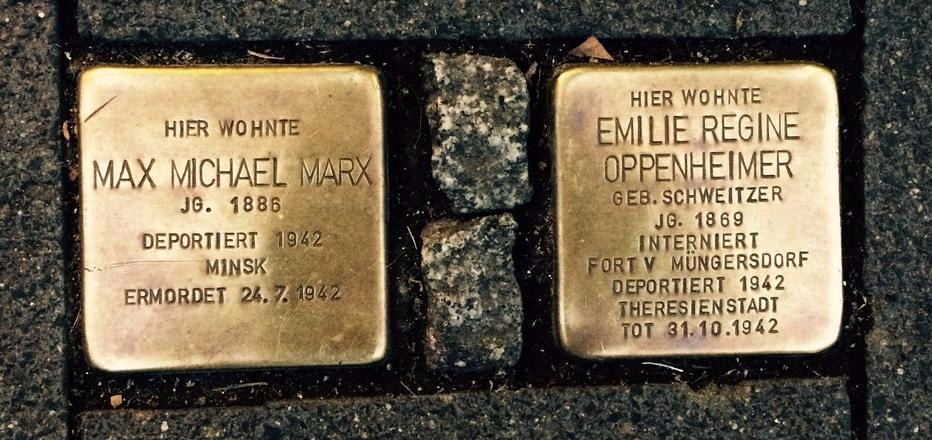The largest widespread monument in Europe the Stolpersteines - Stumbling stones
A small square block of stone (10x10 cm), covered with shiny brass, placed in front of the door of the house in which a deported to the Nazi concentration camps and extermination camps had his last residence.
He remembers the name, the year of birth, the day and place of deportation, the date of death.
They are the "Stolpersteines", an initiative created by the Berlin artist Gunter Demnig as a reaction to all forms of denial and oblivion, to remember all the victims of National Socialism, whatever the reason for the persecution: religion, race, political ideas, sexual orientations.
The decisive episode for the birth of 'Pietre d'lnciampo' took place in Cologne in 1990, when a citizen disputed the truthfulness of the deportation of 1,000 Sinti of the Rhenish city in 1940, on the occasion of the installation of a sculptural work to remember the persecution.
From that moment Gunter Demnig, born in Berlin in 1947, dedicated himself to building the largest diffused monument in Europe, through the installation of "Stolpersteines", on the sidewalks in front of the homes of the victims of the Nazi persecutions.

An unprecedented initiative, which soon crossed the borders of Germany by virtue of its original function of stimulating the collective conscience in many European countries.
Thanks to a word that is as silent as it is effective, today we meet over 50,000 Stolperstein in more than 2,000 cities in Austria, Belgium, Croatia, France, Germany, Greece, Italy, Lithuania, Luxembourg, Norway, Holland, Poland, Republic Czech, Romania, Russia, Slovakia, Slovenia, Spain, Switzerland, Ukraine and Hungary.
The aspiration of the "Stolperstein" is to keep alive the memory of the victims of the Nazi-fascist ideology in the symbol of everyday life - their home - while inviting those who go to reflect on what happened in that place and on that date, not to forget.
A simple block of stone then, like the many who pave the streets of our cities, but with an unprecedented evocative force, because it was placed in front of the house of the deportees: from there they were taken, torn from their affections and their occupations to be killed without reason, ended up in ashes or in mass graves, thus depriving family members and their descendants even of a place to remember them.
To explain his idea, Gunter Demnig - who personally poses almost all the "the Stolperstein" - took a step in the Talmud: "A person is forgotten only when his name is forgotten".
In Milan the first six "Pietre d'Inciampo", dedicated to as many deportees who did not return from the Nazi concentration camps, were laid on 19 January 2017, thanks to the establishment, on 8 September 2016, of the Committee for "Stones of 'Inciampo "- Milan, chaired by Liliano Segre.
The Committee's ambitious goal is to lay 12 to 24 stones each year until 2021.
Not ambitious enough though, to get to remember all the fallen. The commitment is aimed above all at those victims who no longer have anyone to remember them.
The brass stone therefore calls to reflect on how important it is to "remember to remember" and to watch out that what happened does not happen again.






